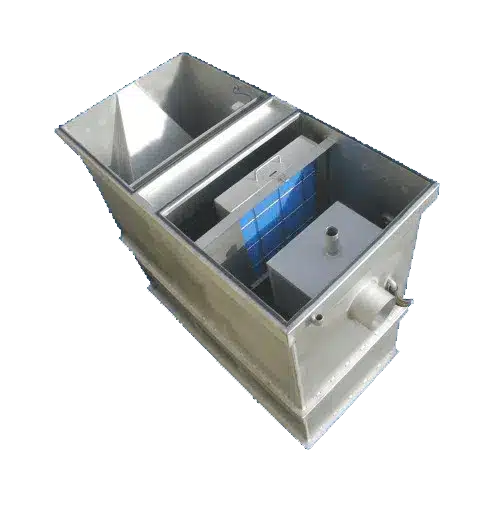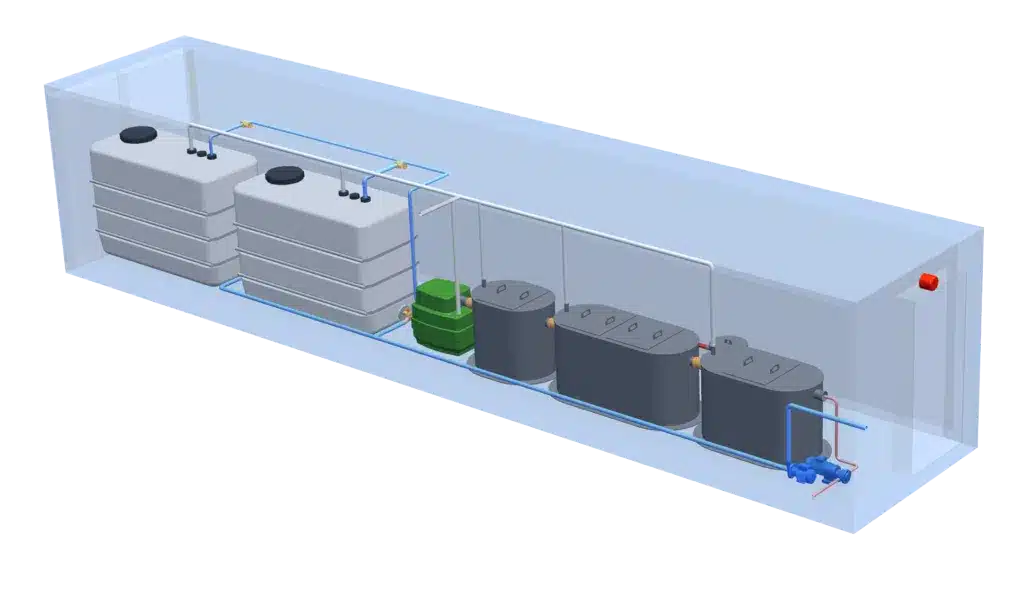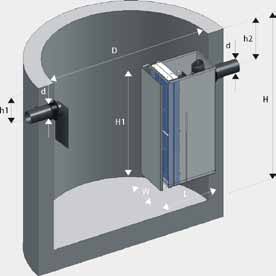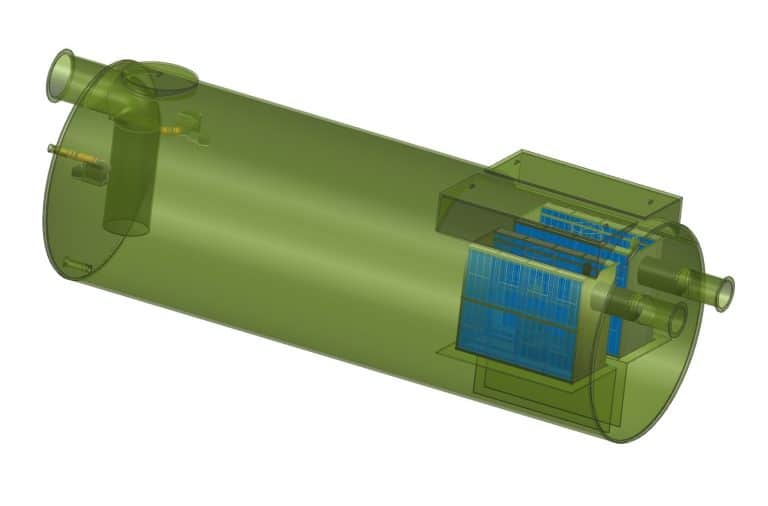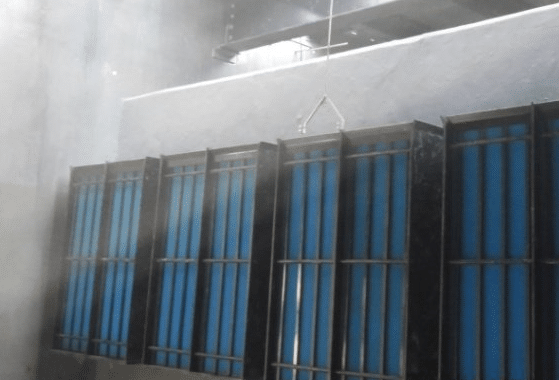Do you know that in California, not treating your industrial wastewater right could close your business? Oil Water Separator Tanks California are more than just a law. They’re key to your company’s future and the planet’s health.
In California, places that send out wastewater with oil or dirt must use these tanks. From car repair shops to gas stations, these tanks are vital. They make sure only clean water goes into the sewer.
Freytech Inc. leads with top-notch Oil Water Separator Tanks. These tanks use the latest technology to remove contaminants. They’re perfect for businesses handling motor oil, diesel, gasoline, or jet fuel. These separators keep you in line with the law and protect the environment.
Key Takeaways
- Oil Water Separator Tanks are a must for many California businesses
- They’re key for following state environmental laws
- Advanced systems can achieve 5 PPM separation efficiency
- These tanks are vital for industries like automotive and transportation
- Good wastewater treatment shields businesses from legal trouble and fines
Introduction to Oil Water Separator Tanks in California
Oil water separator tanks are key in California’s industrial scene. They treat wastewater before it’s let go, protecting the environment. With California’s tough green rules, these tanks are a must for many companies.
Definition and Purpose
Oil water separators are tanks that take oil and other petroleum out of water. They use gravity to separate the oil from the water. This is vital for managing stormwater and keeping California’s waters clean.
Importance in Industrial Settings
In industrial areas, these tanks are a must-have. They help places like factories and auto shops meet water quality standards. By using oil water separators, companies dodge big fines and keep the environment safe. Some even use underground tanks for spill control.
California’s Environmental Regulations
California has very strict green laws. Many places must use oil water separators to follow these rules. The state watches water releases closely and has tough penalties for breaking the rules. So, companies in California count on these tanks to stay legal and run smoothly.
Types of Oil Water Separator Tanks
Oil water separator tanks have different designs for various industrial needs. They use hydraulic loading rates and coalescing plate packs to separate oil from water well. Let’s look at the main types of separators in California.
Above Ground Separators
Above ground oil water separators are efficient and easy to maintain. They’re perfect for places with little space or where putting things underground isn’t possible. You can quickly adjust these units to fit your site’s needs.
Below Ground Separators
Below ground separators are big tanks buried underground. They can handle flows from 50 to 5,000 gallons per minute. Made of carbon steel with protective coatings, they can handle tough conditions. These separators use advanced coalescing plate packs to remove oil better.
Customized Solutions
For special needs, customized oil water separators are made. These systems are designed with flow rates, contaminant types, and space in mind. Engineers make these separators to work best for certain industrial processes, improving separation efficiency.
Oil Water Separator Tanks California: Design and Components
Oil water separator tanks in California are key to meeting discharge limits and preventing stormwater pollution. They have a complex design with several parts that work together to separate oil from water.
The inlet brings in contaminated water, which then meets a flow distributor. This spreads the mixture out, avoiding clogs and ensuring good separation. An energy dissipater slows the water down, helping heavy particles settle.
The presettling chamber catches solid particles. The sludge baffle keeps them from going back into the water. Then, the mixture goes into the oil coalescing chamber.
Here, parallel plates and impingement coalescers merge small oil droplets into bigger ones. This makes them easier to remove.
An oil dam catches the separated oil, and clean water goes to the clearwell through pipes. This setup meets California’s strict rules for stormwater pollution prevention and discharge limits.
Access covers make maintenance and checks easy. The tanks also have vents, fittings for removing oil and sludge, sampling, and gauging. Underground separators have big manways for regular upkeep, ensuring they work well for a long time and follow the rules.
Applications and Industries Requiring Oil Water Separators
Oil water separator tanks are key in treating industrial wastewater across many sectors. They help companies follow environmental laws and manage their wastewater well. Let’s look at some main industries that use these important devices.
Automotive and Transportation
The car industry relies a lot on oil water separators. Car wash places, quick-lube stations, and repair shops create oily wastewater. These separators take out oil and grease, making sure the water is clean and safe for the environment.
Manufacturing Facilities
Manufacturing plants often make oil-contaminated water during their work. Oil water separators are crucial for treating this wastewater before it’s released. They keep factories in line with environmental laws and protect nearby water sources from pollution. Many factories put these systems in their waste management plans.
Stormwater Management
Stormwater from parking lots, industrial areas, and transportation hubs can have oil and pollutants. Oil water separators are key in stormwater management. They catch and remove oil from rainwater, keeping local waterways safe and helping cities follow environmental rules.
Performance Standards and Efficiency
Oil water separator tanks in California have to follow strict rules. They are made to handle different amounts of water and separate various oils. The best ones use advanced coalescing plate packs for top separation.
Top oil water separators go beyond North American limits. They aim for 10 parts per million (PPM) of hydrocarbons in the water. But, the best ones can get down to 5 PPM or even 0.1 PPM for very small amounts of oil.
Important features include good venting and strong structure to handle loads. Quality separators can store about 30% of their volume in oil. This setup works well in many places, like car shops and factories.
These tanks help California businesses follow environmental laws and protect water. Keeping them in good shape and running them right is key. This ensures they work well and meet the needed standards.
Installation and Maintenance of Oil Water Separator Tanks
Setting up and keeping oil water separator tanks right is crucial. These steps make sure they work well and follow California’s strict rules.
Site Preparation
Before putting in a separator, the site needs to be ready. This means checking the ground, setting up vents, and building strong supports. For underground tanks, crews dig holes and create safe access points.
Regular Inspection and Cleaning
Keeping oil water separators clean is essential. Teams should check them often and remove any built-up gunk. This keeps the tanks working well and stops costly breaks. For underground tanks, 36-inch manways let workers get in to clean.
Compliance with Local Regulations
Following local laws is not optional – it’s a must. This includes keeping good records and following stormwater pollution prevention plans. Businesses must keep up with California’s changing rules to avoid fines and keep our water clean.
These separators are crucial in storm water systems. They process runoff to meet the US EPA’s Clean Water Act standards. With effective oily water treatment, facilities protect the environment and dodge big fines.


